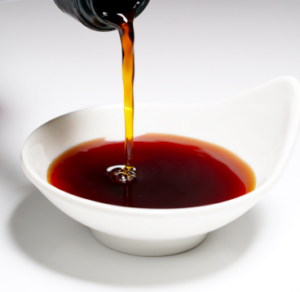Table of Contents
Organic soy sauce is a unique condiment that has captivated food lovers and health-conscious individuals. Known for its deep umami flavor, soy sauce has been a staple in Asian cooking for centuries, but natural soy sauce brings a modern twist, produced through natural and sustainable methods. Here, we’ll explore its history, production process, and health benefits, revealing why it stands out as a top choice for those who prioritize quality and natural ingredients.
A Brief History of Natural Soy Sauce
The story of soy sauce dates back over 2,000 years to ancient China, where it was created as a method to preserve food and add flavor. Over time, soy sauce production techniques spread across Asia, with regions like Japan and Korea developing their variations. In recent years, the demand for natural, high-quality foods has led to a rise in organic soy sauce, which uses traditional methods but emphasizes organic, pesticide-free ingredients.
How It Is Made
 The production of organic soy sauce resembles traditional methods but with a focus on organic ingredients and environmentally friendly practices. It typically starts with organic soybeans and organic wheat, both grown without synthetic pesticides or fertilizers. These ingredients are steamed, roasted, and then combined with a bacterial culture known as “koji,” which plays a key role in the fermentation process.
The production of organic soy sauce resembles traditional methods but with a focus on organic ingredients and environmentally friendly practices. It typically starts with organic soybeans and organic wheat, both grown without synthetic pesticides or fertilizers. These ingredients are steamed, roasted, and then combined with a bacterial culture known as “koji,” which plays a key role in the fermentation process.
The mixture is left to ferment over several months or even years, during which enzymes break down proteins and starches, releasing amino acids and sugars that create the distinct umami flavor of natural soy sauce. Unlike some commercial versions, organic soy sauce doesn’t include artificial additives or preservatives, allowing the natural flavors to shine.
Health Benefits of Organic Soy Sauce
Natural soy sauce offers several health advantages over conventional options. For starters, it is free from synthetic chemicals often found in non-organic sauces. Additionally, the fermentation process may promote beneficial bacteria, supporting gut health. It is also often less refined, which means it can contain antioxidants that combat oxidative stress in the body.
However, like all soy sauces, natural soy sauce contains a significant amount of sodium. For those mindful of their salt intake, there are low-sodium varieties available that provide the same depth of flavor with less salt.
Choosing the Right Natural Soy Sauce
When buying natural soy sauce, look for certifications such as USDA Organic or similar labels to confirm the product meets organic standards. These certifications assure you that the soy sauce is free from synthetic pesticides, GMOs, and artificial preservatives. Opting for it, you support more sustainable farming practices, making it a responsible choice for both health and the environment.
Cooking with Organic Soy Sauce
One of the best aspects of organic soy sauce is its versatility. It adds a savory depth to many dishes, from stir-fries and soups to marinades and salad dressings. Whether used as a flavor enhancer or as a key ingredient in a sauce, natural soy sauce brings a rich, complex taste to any meal.
In conclusion, natural soy sauce is an excellent option for those seeking a flavorful, natural condiment. With its traditional production methods and emphasis on pure, organic ingredients, it not only tastes great but also aligns with the values of health-conscious consumers. As more people seek organic, high-quality foods, natural soy sauce stands out as a flavorful, sustainable choice.
0











